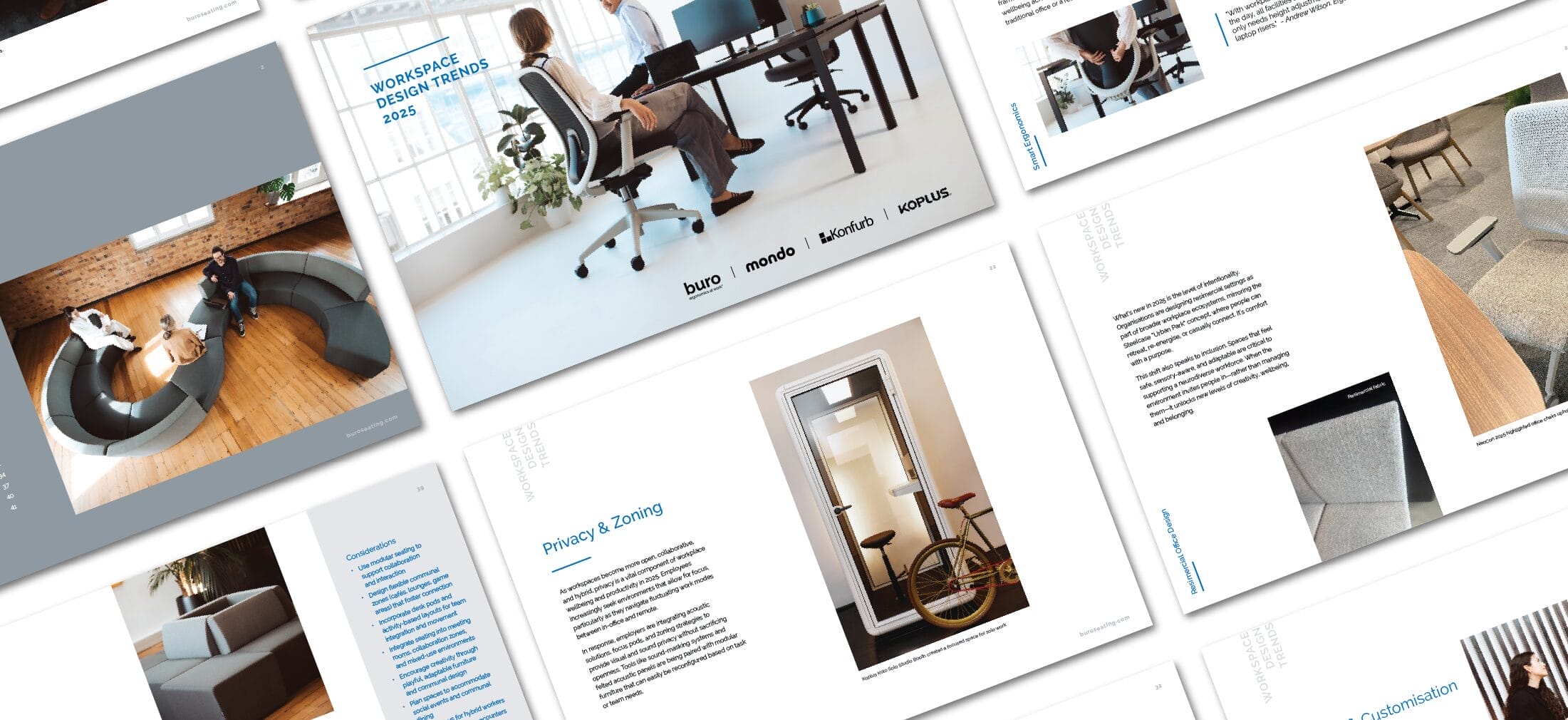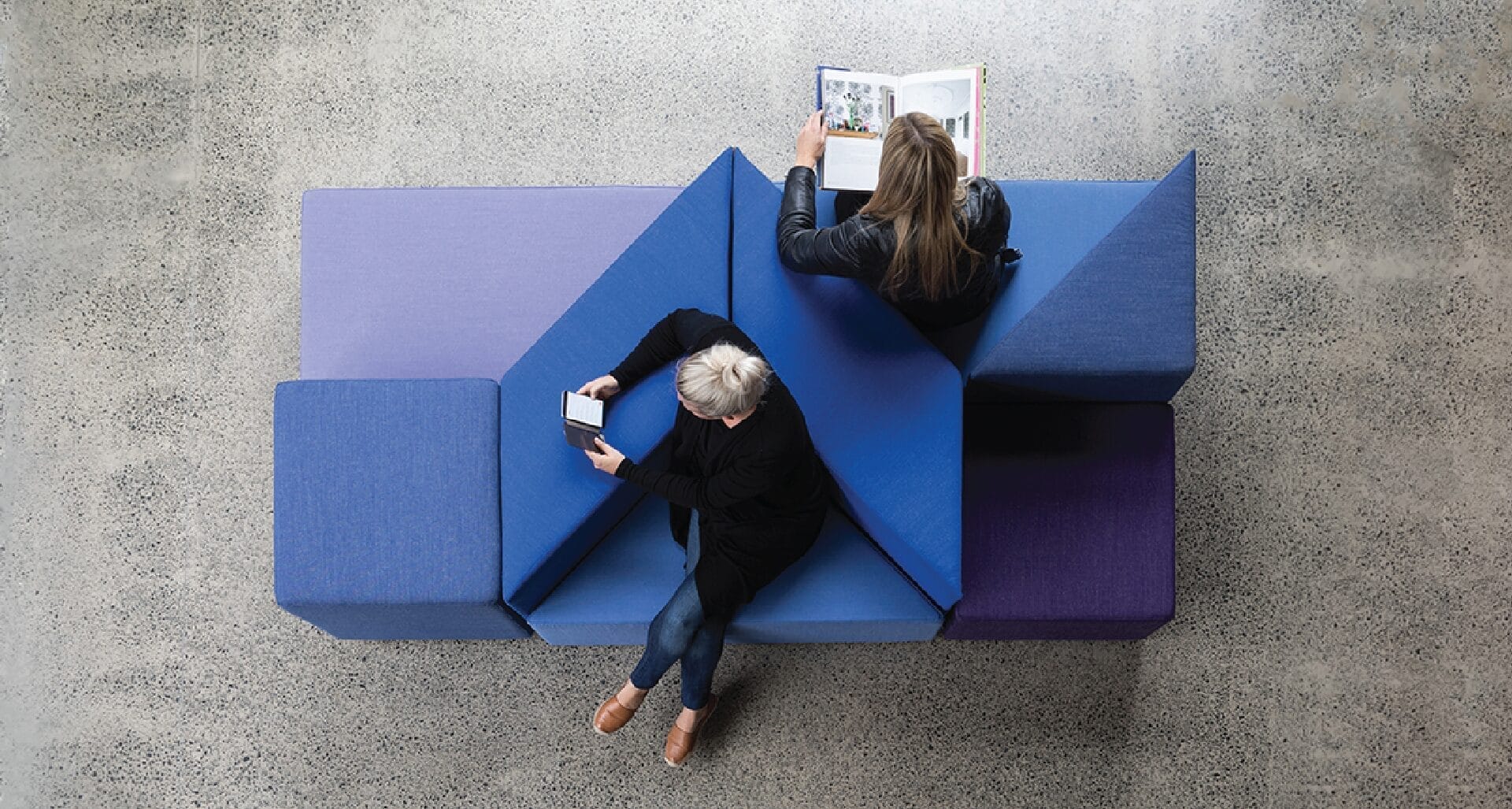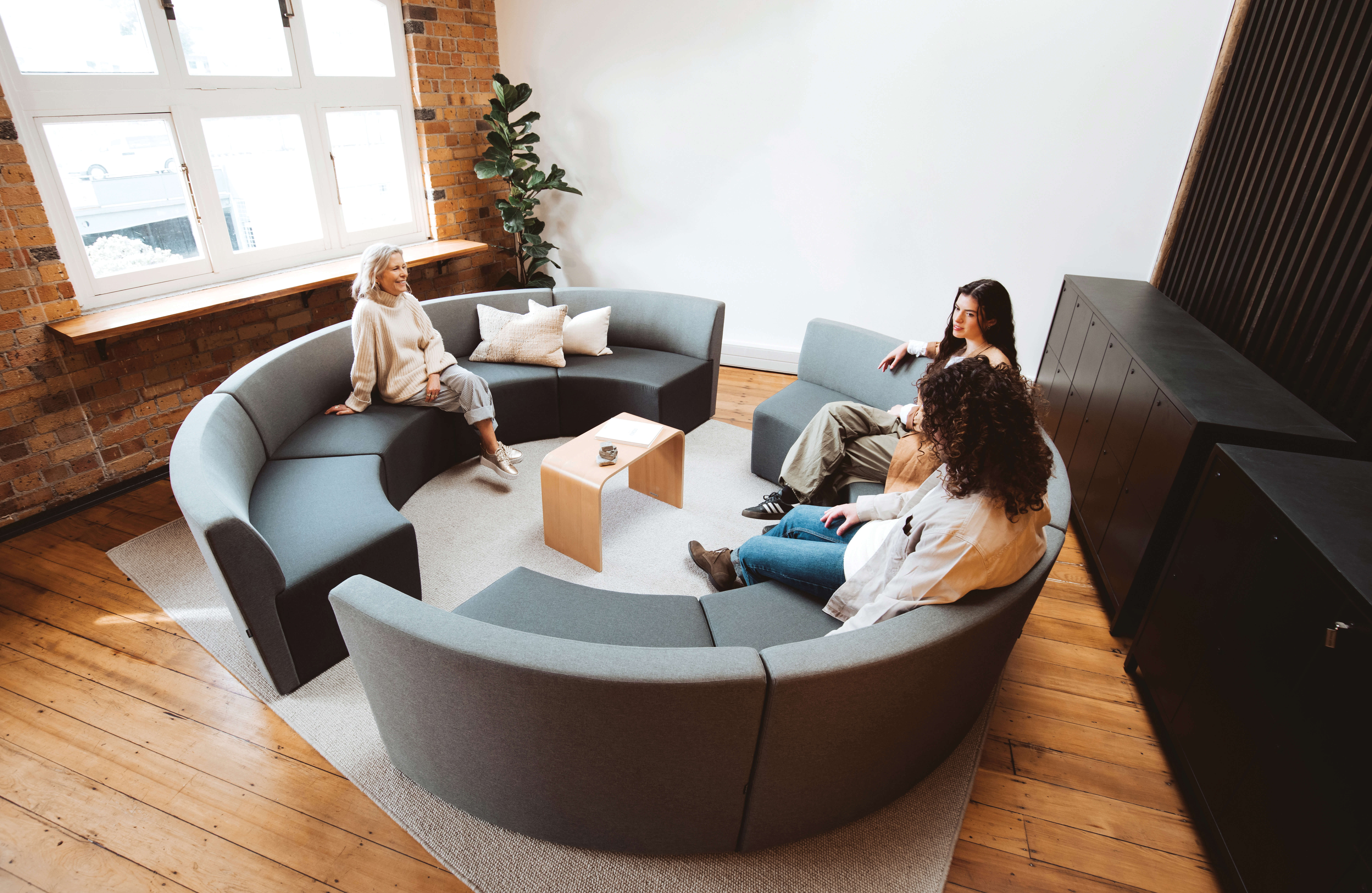In our last blog, flexible work strategist Gillian Brookes and workplace designer Harry Healy, co-founder of Textile Lofts, shared what it takes to design a hybrid workplace that actually works.
Now, we’re shifting the conversation forward. The way we work will keep evolving, and we want to know what’s in store for traditional offices, co-working spaces, and the people who use them.
Let’s take a look.
Work, life, phone
Once upon a time, you went to work, then came home. Two separate places, neatly divided by a commute. Then along came the smartphone, and the gap between these two worlds began to fade away.
Now, work and personal life can interrupt each other anytime, anywhere. You’re walking the dog and DING! An email from your boss. You’re sitting at your desk and DING! a message from your mate.
The constant back-and-forth fragments attention and makes it harder to fully switch gears, whether you’re trying to focus on a task or wind down at the end of the day.
As Gillian explains: “We all want to support people in the practice of flexible work. What we don’t want is to blur the line between work and home so much that people feel like they’re always on. That’s a risk for burnout.”
If we’re all hooked to our phones, how can the workplace foster focus and wellbeing? And how do businesses balance that with performance, productivity, and culture?
To help unpack these questions, we asked Gillian and Harry to share where they see hybrid work heading next.

Harry Healy – Co-Founder of Textile Lofts
Envisioning the future of hybrid offices
Gillian sees workplaces becoming more structured and disciplined in how they use hybrid work. Clearer guidelines around where and when work gets done can help re-establish boundaries and reclaim some of the work-life balance that’s been lost in recent years.
She also believes this will lead to a lift in productivity. This strategic lens is part of what drew Gillian to specialise in workforce strategy in the first place.
“You can spend your whole week just trying to keep the lights on, but when you’re in a leadership role, you have to take a step back and ask, Could we be doing this better?”
In her previous roles, flexible work was a recurring issue, largely seen as an obstacle holding organisations back.
“But when done well, flexible work makes high-quality work more accessible to more people. It can attract a wider talent pool and bring the right people into leadership roles.”

Coworking, reimagined
Flexible work in traditional workplaces has had a flow-on effect into co-working spaces. What started as an option for freelancers and start-ups has blossomed. Co-working spaces are now embraced by bigger businesses to offer staff freedom and flexibility.
“People may come in just a few days a week,” Harry says, “but they make the most of that time.”
As co-working attracts a more diverse mix of people and industries, the spaces should make sure they cater to a variety of needs: quiet zones for deep focus, collaborative areas for meetings, and casual lounges for social connection.
Harry has also noticed that what people want from the model is changing, with many members now craving a sense of hospitality. “People want their workspaces to feel more like a boutique hotel than a traditional office,” says Harry.
Furniture that keeps up with the times
As new hybrid habits unfold, it’s more important than ever to choose furniture that supports the way people work. Workplaces of tomorrow need furniture that is designed to support mobility, focus, and flexibility throughout the day.
Looking for seating that will evolve with your workplace? Buro has you covered.
Konfurb Luna – Built for versatility, this chair easily adjusts to suit different users, making it perfect for hot desks or shared setups.
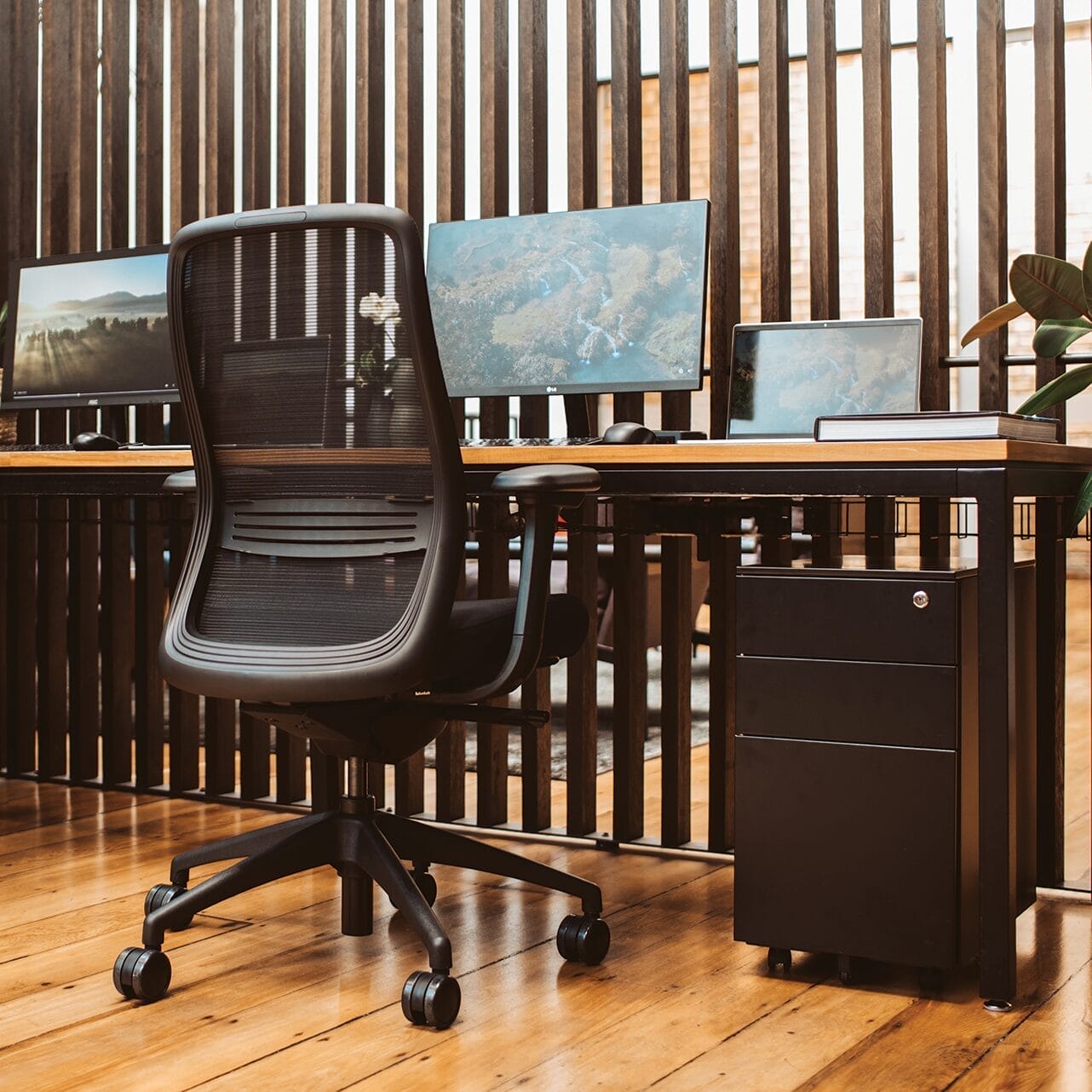

Buro Roma – Your go-to for quiet, focused work. Its ergonomic features promote good posture during deep concentration, no matter where your workstation is.
Konfurb Arco Series – Modular seating that is easy to move, this series can adapt to the environment, be it focused work, team discussions, or casual catch ups.
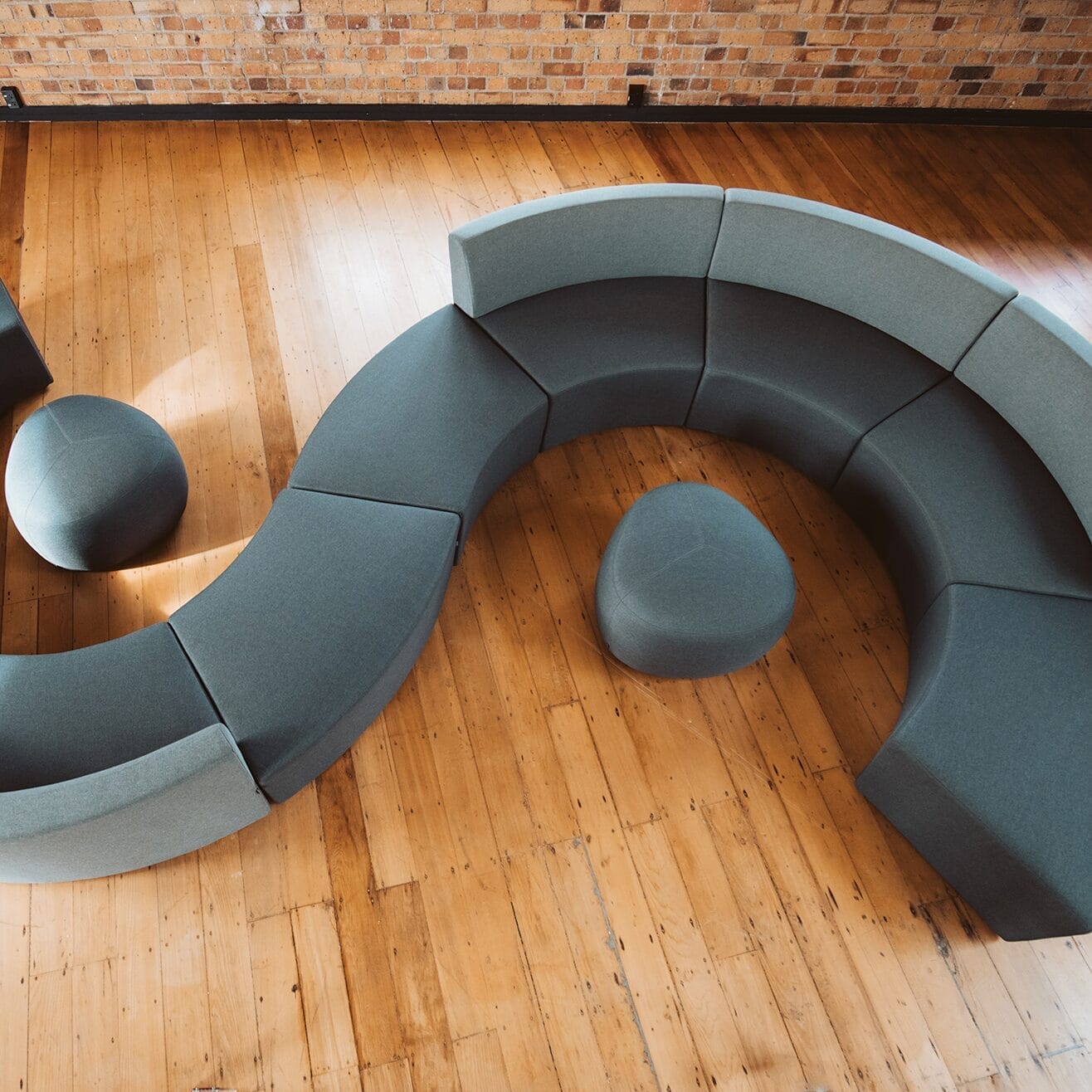
Better communication. Better results.
In Part 1 of this blog, we touched on the downside of hybrid work: teams that are disconnected and out of sync. Fewer shared ideas and less engagement can create a breeding ground for isolation and low productivity.
So, what’s the solution? How can workplaces get people to connect without sacrificing flexibility? It all comes down to communication.
Gillian recommends:
- Team-wide discussions around when people come into the office.
- Creating a culture of casual conversations and check-ins.
- Setting clear boundaries between work and personal time.
Harry says, “These days, it’s about more than just having a place to work. People want a space that feels good, has some buzz, and offers a real sense of connection.”
As the owner of Textile Lofts, Harry likes to communicate with the businesses that use his co-working space. “If companies are clear about their team’s needs, then co-working spaces can respond and adapt. We love working with businesses to shape something that fits how their people want to work.”
Gillian also believes that technology will continue improving communication for hybrid work.
“As better tools emerge, it will help teams coordinate and make smarter, more intentional choices. I see a future where tech improves visibility on who’s in the office, who’s out, and who has booked which desk.”
“If companies are clear about their team’s needs, then co-working spaces can respond and adapt. We love working with businesses to shape something that fits how their people want to work.”
Takeaway tips for navigating the future of hybrid work
We asked both our experts for their single biggest piece of advice.
Gillian: “Don’t worry too much about the policy—focus on the practice. You don’t want empty rhetoric or rigid rules. Instead, invest in building the skills, systems, and behaviours that bring hybrid work to life.
If you’re not sure where to start, my book Flexperts is full of practical tools (not rules!) to help your teams find their rhythm.”
Harry: “If you’re working from a co-working space, don’t just show up to tick a box. Set your day up properly, connect with others, attend an event, and mix up your routine.
The more you put into the space, the more you’ll get out of it.”

Ready for the future of hybrid work?
Whether you’re fitting out a new office, rethinking your layout, or exploring co-working options, the goal is to support your people to do their best work, wherever they are.
With thoughtful planning, the right tools, and flexible design, hybrid work offers long-term benefits for your people and your business. For help designing an office that is future-focused, speak to the team at Buro.



